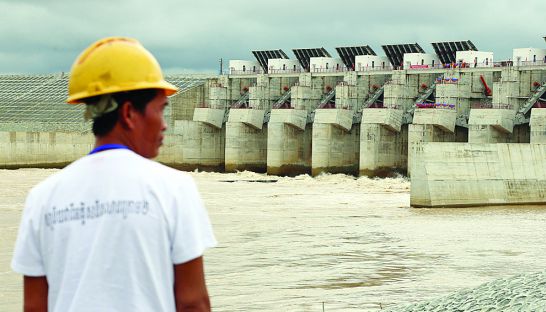Cambodia: For energy independence, government must diversify and invest: experts
Despite Cambodia’s efforts to shore up its energy independence, the government needs to increase homegrown electricity generation to lower prices, ensure investment and meet the Kingdom’s increasing demand for energy, experts said yesterday at a regional energy security forum.
Han Phoumin, an energy economist at the Economic Research Institute for Asean and East Asia, said that the Kingdom lacks energy security as it remains heavily dependent on imports of oil, coal and electricity. In order to ensure security in the sector, he urged that the government needs to diversify its sources of energy, create a solid national grid and invest in stockpiling oil and gas.
“Our economy is shifting toward more energy-consuming industries, like the production of electronics, and it needs a stable supply of electricity to ensure there are no black-outs,” he said.
He added that investors would have greater confidence in entering the Cambodian market if they could be assured that the country had a reliable national grid.
“Black-outs are negatively affecting production. Thus, aside from lowering the price of electricity [for businesses and citizens], ensuring a stable electricity supply in the country is crucial to attracting new investments.”
According to Phoumin, Cambodia’s electricity demand is projected to grow significantly in the upcoming decades, with an average annual growth rate of 12.8 percent from 2013 to 2040. Currently, Cambodia relies heavily on energy produced by coal-fired and hydropower plants that do not have the capacity to meet future consumption.
The latest World Bank Report noted that a lack of competitive bidding in energy generation, fragmentation in transmission and distribution as well as the government’s Industrial Development Policy 2015-2025 showed almost no planned reduction in electricity prices until 2020.
Ith Praing, secretary of state for the Ministry of Mines and Energy, said that while Cambodia has seen progress in developing its own electricity in recent years as a slew of projects have come online, the government remains behind schedule on its promises.
The government originally outlined plans over a decade ago to supply all Cambodian households with at least some form of electricity by 2020, he said, but this goal has since been pushed back and is now scheduled to be achieved by 2030.
Nevertheless, he added that since Cambodia adopted its Program for the Development of Rural Electrification in 2004, the number of households in the Kingdom with access to electricity has increased from 25 percent to 60 percent.
While Cambodia still imports electricity from Thailand, Vietnam and Laos, Praing said that the Kingdom’s dependency on these countries has decreased, with this year’s imports only accounting for 20 percent of total consumption.
“We are gradually becoming an electricity-independent country, and we hope that electricity costs will continue to become lower and lower,” he said.
Pou Sothirak, executive director of the Cambodian Institute for Cooperation and Peace, said that countries in the region are seeing an increase in demand for electricity which will require rapid growth of energy capacity in the upcoming decades.
However, he added that governments should not rush to expand their energy sectors at the cost of ensuring long-term energy security.
“Officials in the region must avoid adopting policies that have been proven to be damaging to the economy or the environment,” he said. “They should also ensure that the urge to adopt coal and hydropower does not make them overlook the importance of renewable and green technologies.”
Source: http://www.phnompenhpost.com/business/energy-independence-government-must-diversify-and-invest-experts


 English
English




